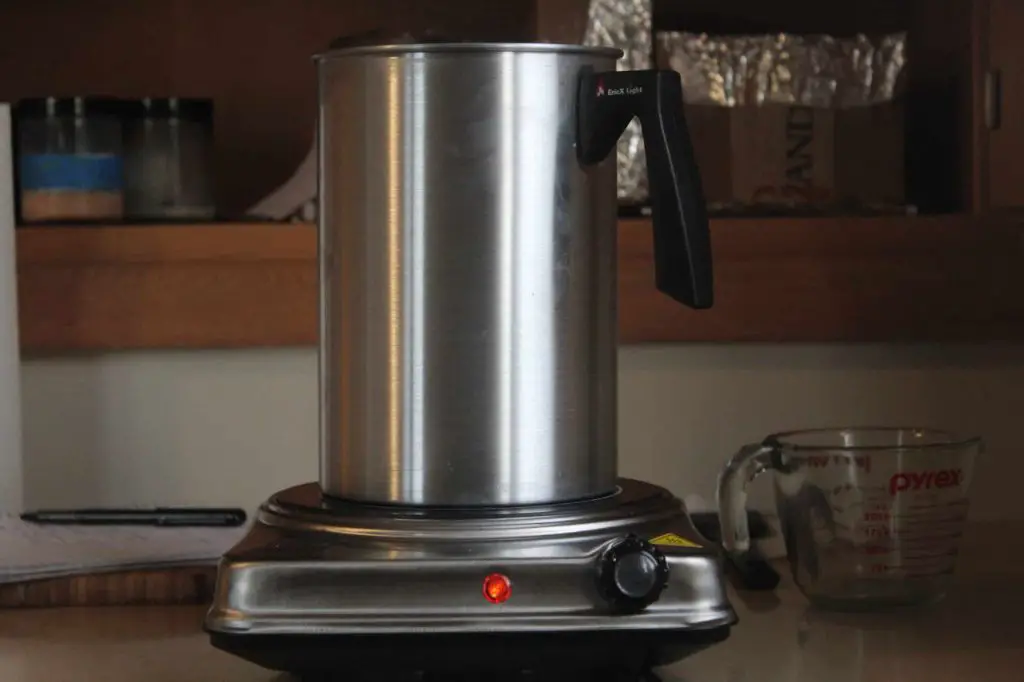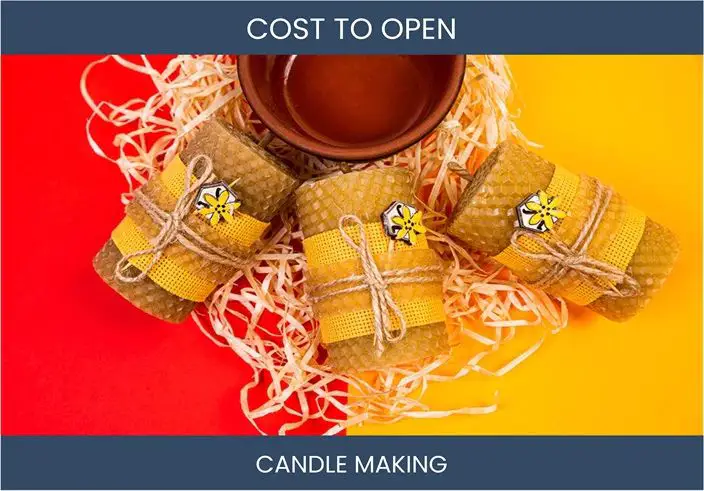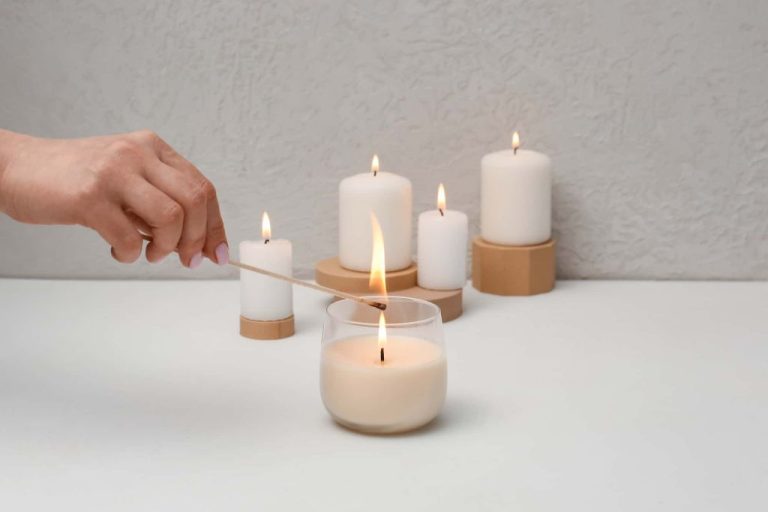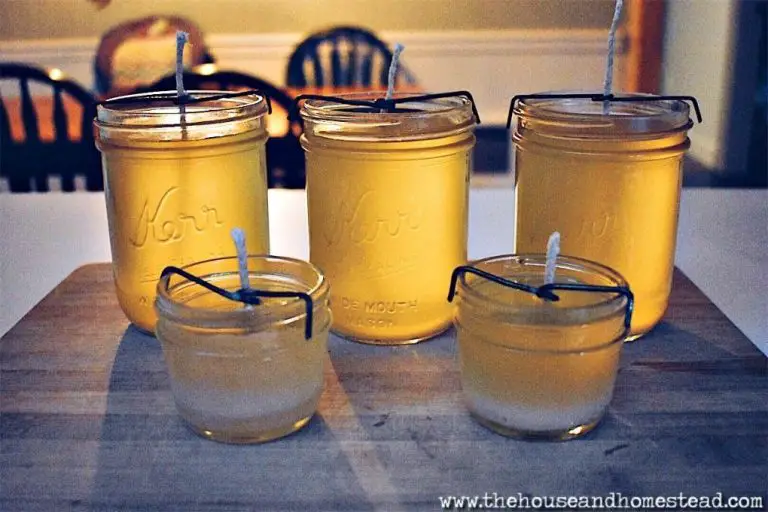How Do I Start A Candle Business From Home?
Determine Your Candle Making Process
The first step in starting a candle business is determining your candle making process. This involves key decisions like:
– Choose wax type – Popular options include soy, paraffin, beeswax, vegetable, and coconut wax. Consider performance, cost, availability, and sustainability. Many candle makers use a blend for optimal results. See this source for more details on different candle wax types.
– Decide on pouring vs hand-making – Poured candles involve melting wax and pouring it into containers and molds. Hand-making involves rolling sheets of wax to form candles. Pouring allows more custom shapes while hand-making can be simpler.
– Determine if you’ll use candle dyes and scents – Most candle makers use dyes and scents to create more visual appeal and tailor scents. However, natural wax can also be left uncolored and unscented. Look into candle dye and fragrance oil options.
Testing different waxes, scents, dyes, and techniques will allow you to refine your candle making process and recipes before launch.
Research Equipment Needed
When starting a candle making business from home, one of the most important steps is researching and obtaining the proper equipment. This includes both specialized candle making tools as well as general supplies.

Some essential candle making equipment includes:
- Wax melter – Used to melt wax to the proper temperature before pouring into containers. Can be a basic double boiler setup or more advanced melters with temperature controls (https://www.mycandlemaking.com/candle-making-material-in-mumbai/).
- Pour pots – Smaller pots used to hold melted wax before pouring into containers/jars. Allow more control over pouring.
- Wicks – The cord that burns inside the candle. Different wick types and sizes suit different candle jars and wax types.
- Jars/containers – What holds the candle. Choose glass, tin, or other materials in different shapes and sizes.
- Labeling supplies – Create custom labels to brand your business. Use sticker paper, glue, etc.
Having the right equipment allows you to efficiently produce quality, consistent candles from home. Investing in proper candle making tools early on helps set up your business for success.
Develop Your Business Plan
A solid business plan is crucial for any new venture to succeed. To develop your candle business plan, first define your target audience and product line. Research candle buying demographics and trends to determine who your customers are and what kind of candles they want. Set competitive yet achievable financial goals for sales and expenses for the first 1-3 years. Include projected costs for ingredients, supplies, equipment, labeling, packaging, marketing, and other overhead
Your business plan should also describe your branding, packaging, and marketing strategy in detail. Decide on your brand name, logo, label design, fragrance collections, and other branding elements that will differentiate you. Map out how you will market through your website, social media, trade shows, local retail partnerships, etc. to promote your brand and products. Your plan should analyze the competitive landscape and explain how you will set yourself apart. With a thoughtful business plan, you can set your candle business up for success.
Source: https://www.nerdwallet.com/article/small-business/how-to-start-a-candle-business
Register Your Business
One of the first steps to starting a candle business from home is to legally register your business. Here are some key steps:
Choose a unique and memorable business name and register it with your state government. You can search business name databases to ensure your desired name is available and file the necessary paperwork such as articles of incorporation or organization.
Apply for an Employer Identification Number (EIN) from the IRS if you plan to hire employees or form a corporation or partnership. This establishes your business identity for tax purposes. This IRS page has more details on applying for an EIN.
Obtain any required local or state licenses and permits to legally operate your candle business from home. Requirements vary based on your location. Common examples include a home business permit, sales tax permit, and zoning approval. Check with your local government office to learn about specific requirements in your area.
Properly registering your candle business makes you legit in the eyes of the government and sets you up for legal and tax compliance. Consulting with a business attorney or accountant can also provide guidance on registration requirements.
Set Up Your Home Workspace
Setting up your home workspace is an important step when starting a candle business. You’ll want to designate an area in your home specifically for candle making. This ensures all your supplies are organized in one place for efficiency. The workspace should have proper ventilation, which is crucial for safety when working with flammable wax and fragrance oils.
According to this source, the ideal temperature for candle making ranges between 66-77° F (19-25° C). Open a window or use a fan over your work area to maintain airflow and dissipate fumes. Avoid drafts directly on your candle vessel while the wax is cooling and setting up.
Organize your workspace in a logical manner to optimize your candle making process. Keep wax melting pots, pouring pitchers, thermometers, wicks, jars, scent and dye oils within easy access. Store excess supplies out of the way. A clean, uncluttered workspace allows you to focus on efficiently producing quality candles.
Invest in proper equipment like pour pots, measuring tools, and personal protective gear. Organization and preparation of your candle making workspace makes the process smoother and sets you up for success in starting your home-based business.
Refine Your Recipes
Once you have the basic candle making process down, it’s time to start experimenting and refining your recipes to create your signature products. When formulating your wax blends, it’s best to start with a simple blend of paraffin and soy wax, adjusting the ratios until you achieve the ideal burn and scent throw. Refer to a scent guide when selecting fragrance oils, and try combining 1-3 complementary scents in varying proportions. Test how different wicks affect your candles’ burn time. It often takes testing 5-10 iterations to settle on a recipe.
When adding colors, use recommended guidelines for how much dye to use with different wax types. Over time, you’ll discover which scents, colors and visual styles resonate most with your target customers. Consider grouping your candles into signature collections with descriptive names that convey a theme or experience. Continue refining and expanding your offerings based on feedback and sales data. Pay close attention to reviews and product requests to guide your recipe development. With experimentation and persistence, you’ll create candles with exceptional quality that your customers rave about.
Source Quality Supplies
Once you have your candle making process and recipes finalized, it’s time to source the quality ingredients and materials needed to make your candles. Finding reliable vendors is crucial for keeping costs low and inventory well-stocked.
For your wax, look for suppliers that offer bulk paraffin, soy, or beeswax at wholesale prices. Buying wax by the pallet allows you to get better rates per pound. Make sure to sample any new waxes first before purchasing large quantities.
The same goes for wicks – buy spools of pre-tabbed wicks in bulk from manufacturers. Testing different wick sizes with your wax and vessel is important to find the right wick-to-wax ratio for optimal burns. You’ll need a variety of wick sizes on hand for testing and production.
When sourcing jars and other containers, dollar stores and online retailers can offer discounts for bulk purchases. Just be mindful of minimum order quantities. Get samples of any new jars before buying hundreds to make sure they work well with your candle making process.
Keeping adequate inventory of supplies ensures you don’t run out of key ingredients in the middle of production. Monitor your stock levels closely and reorder supplies with plenty of lead time. Consider storage solutions like shelving units or racks to organize bulk inventory.
With some savvy sourcing of quality ingredients in bulk, you can keep your candle making supplies stocked while maximizing your profits.
Market and Sell Your Candles
Creating an effective brand and product presentation is critical for selling homemade candles. Design attractive product labels that reflect your brand image. Make sure to include important information like the company name, candle name/scent, weight, burn time, safety warnings, and contact info. Having a professional looking website and online store (through platforms like Etsy, Shopify, etc) will allow you to sell candles across a wider geographic area [1]. Locally, connect with gift shops, boutiques, and craft fairs/markets to sell your products in-person.
Use social media for low-cost promotion by sharing photos of your candles, behind the scenes peeks at your process, special offers, etc. Make the most of slower seasons like winter with promotions like discounts or free shipping for your email subscribers [1]. Staying active on social year-round helps build an audience over time. Consider collaborating with other local businesses (e.g. candle and coffee pairings) for joint promotion.
Manage Finances and Growth
As your candle business takes off, it’s important to stay on top of your finances. Tracking income, expenses, and overall profitability is key. Use accounting software or spreadsheets to monitor cash flow. Record all costs associated with supplies, packaging, labeling, shipping, etc. Factor in your time investments as well. This will help you accurately calculate profit margins on each product.
Reinvesting earnings back into your business can enable expansion. Consider upgrading equipment, expanding your product catalog, and enhancing marketing. Evaluating financials often allows you to identify what’s working so you can double down on successful products. As revenue and profitability increase over time, you may be able to transition into running your candle business full-time.
For more tips see this comprehensive guide for financial planning for your candle business https://sosacandlesstore.com/blogs/founder-diaries/financial-planning-for-your-candle-business-a-comprehensive-guide-for-2024
Maintain Quality and Consistency
One of the keys to a successful candle business is maintaining quality and consistency across all of your products. This allows you to deliver the same great experience to customers time and again. Here are some tips for maintaining quality and consistency:
Standardize your candle making processes as much as possible. Document your procedures, ingredients, supplies, equipment settings, and techniques. Follow the exact same steps each time you make a certain candle variety to achieve consistent results. Refer back to your documentation frequently.
Stick closely to your candle recipes and formulas. Measure ingredients precisely and use the same wax, fragrance, and dye amounts in each batch. Never eyeball or estimate amounts. Weighing ingredients with a digital scale is best for accuracy.
Focus on customer satisfaction above all else. Rigorously test your candles to ensure proper burn time, wax appearance, scent throw, and more. Burn multiple samples from each batch and solicit objective feedback. If you notice any decline in quality, determine the root cause and correct it.
Maintain detailed records for each production batch, including the supplies used and any deviations from the procedure. This allows you to replicate your successes and avoid repeating mistakes. Refer to this guide for tips on record keeping.
By standardizing your candle making process and focusing on quality, you can build a reputation for excellent products that customers trust and love.






